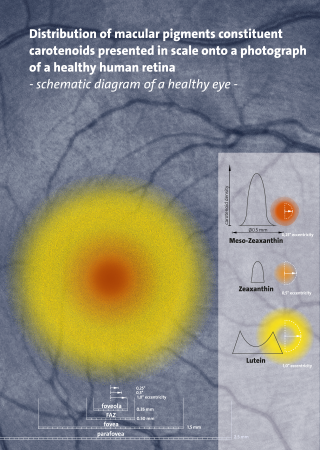
Carotenoids are yellow, orange, and red organic pigments that are produced by plants and algae, as well as several bacteria, archaea, and fungi. Carotenoids give the characteristic color to pumpkins, carrots, parsnips, corn, tomatoes, canaries, flamingos, salmon, lobster, shrimp, and daffodils. Over 1,100 identified carotenoids can be further categorized into two classes – xanthophylls and carotenes.
Thailand's Psychotropic Substances Act is a law designed to regulate certain mind-altering drugs. According to the Office of the Narcotics Control Board, "The Act directly resulted from the Convention on Psychotropic Substances 1971 of which Thailand is a party." The Act divides psychotropic drugs into four Schedules. Offenses involving Schedule I and II drugs carry heavier penalties than those involving Schedule III and IV drugs. Note that this statute does not regulate most opioids, cocaine, or some amphetamines. The vast majority of narcotic painkillers, along with cocaine and most amphetamines are regulated under the Narcotics Act.

The Controlled Drugs and Substances Act is Canada's federal drug control statute. Passed in 1996 under Prime Minister Jean Chrétien's government, it repeals the Narcotic Control Act and Parts III and IV of the Food and Drugs Act, and establishes eight Schedules of controlled substances and two Classes of precursors. It provides that "The Governor in Council may, by order, amend any of Schedules I to VIII by adding to them or deleting from them any item or portion of an item, where the Governor in Council deems the amendment to be necessary in the public interest."

Phenanthrenoids are chemical compounds formed with a phenanthrene backbone. These compounds occur naturally in plants, although they can also be synthesized.

DIMBOA (2,4-dihydroxy-7-methoxy-1,4-benzoxazin-3-one) is a naturally occurring hydroxamic acid, a benzoxazinoid. DIMBOA is a powerful antibiotic present in maize, wheat, rye, and related grasses,
In enzymology, a 3-hydroxy-4-oxoquinoline 2,4-dioxygenase (EC 1.13.11.47) is an enzyme that catalyzes the chemical reaction
In enzymology, an alizarin 2-beta-glucosyltransferase is an enzyme that catalyzes the chemical reaction
In enzymology, a hydroquinone glucosyltransferase is an enzyme that catalyzes the chemical reaction
In enzymology, an indole-3-acetate beta-glucosyltransferase is an enzyme that catalyzes the chemical reaction

In enzymology, a starch synthase is an enzyme that catalyzes the chemical reaction
In enzymology, a xyloglucan 4-glucosyltransferase is an enzyme that catalyzes the chemical reaction in which a beta-D-glucosyl residue is transferred from UDP-glucose to another glucose residue in xyloglucan, linked by a beta-1,4-D-glucosyl-D-glucose bond.
The molecular formula C9H9NO5 (molar mass: 211.17 g/mol) may refer to:
3-hydroxyindolin-2-one monooxygenase (EC 1.14.13.139, BX4 (gene), CYP71C1 (gene)) is an enzyme with systematic name 3-hydroxyindolin-2-one,NAD(P)H:oxygen oxidoreductase (2-hydroxy-2H-1,4-benzoxazin-3(4H)-one-forming). This enzyme catalyses the following chemical reaction
2-Hydroxy-1,4-benzoxazin-3-one monooxygenase (EC 1.14.13.140, BX5 (gene), CYP71C3 (gene)) is an enzyme with systematic name 2-hydroxy-2H-1,4-benzoxazin-3(4H)-one,NAD(P)H:oxygen oxidoreductase (N-hydroxylating). This enzyme catalyses the following chemical reaction
2,4-dihydroxy-1,4-benzoxazin-3-one-glucoside dioxygenase (EC 1.14.20.2, BX6 (gene), DIBOA-Glc dioxygenase) is an enzyme with systematic name (2R)-4-hydroxy-3-oxo-3,4-dihydro-2H-1,4-benzoxazin-2-yl beta-D-glucopyranoside:oxygen oxidoreductase (7-hydroxylating). This enzyme catalyses the following chemical reaction
2,4,7-trihydroxy-1,4-benzoxazin-3-one-glucoside 7-O-methyltransferase is an enzyme with systematic name S-adenosyl-L-methionine:(2R)-4,7-dihydroxy-3-oxo-3,4-dihydro-2H-1,4-benzoxazin-2-yl β-D-glucopyranoside 7-O-methyltransferase. This enzyme catalyses the following chemical reaction
4-Hydroxy-7-methoxy-3-oxo-3,4-dihydro-2H-1,4-benzoxazin-2-yl glucoside beta-D-glucosidase (EC 3.2.1.182, DIMBOAGlc hydrolase, DIMBOA glucosidase) is an enzyme with systematic name (2R)-4-hydroxy-7-methoxy-3-oxo-3,4-dihydro-2H-1,4-benzoxazin-2-yl beta-D-glucopyranoside beta-D-glucosidase. This enzyme catalyses the following chemical reaction
Acanthus hirsutus is a species of flowering plant in the Acanthaceae family.

Homoisoflavonoids (3-benzylidenechroman-4-ones) are a type of phenolic compounds occurring naturally in plants.






